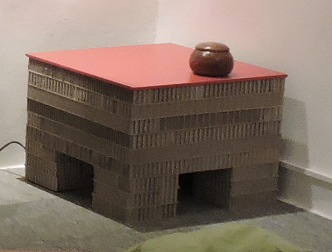Planting games are a family of board games widespread in much of the world (especially in Africa, the Middle East, Southeast Asia, and Central America). The similarity of many aspects of the game to agricultural activity and the simplicity of the board and pieces, the large number of variations, and their spread throughout the world suggest an extremely ancient origin; according to some, perhaps, close to the very origins of civilization.
These are ancient games that are precursors to backgamon. Play is a universal tool that helps to learn more about oneself and others. Play is pastime, recreation and at the same time a vehicle that allows, almost without realizing it, to appropriate useful skills in the development of each individual.
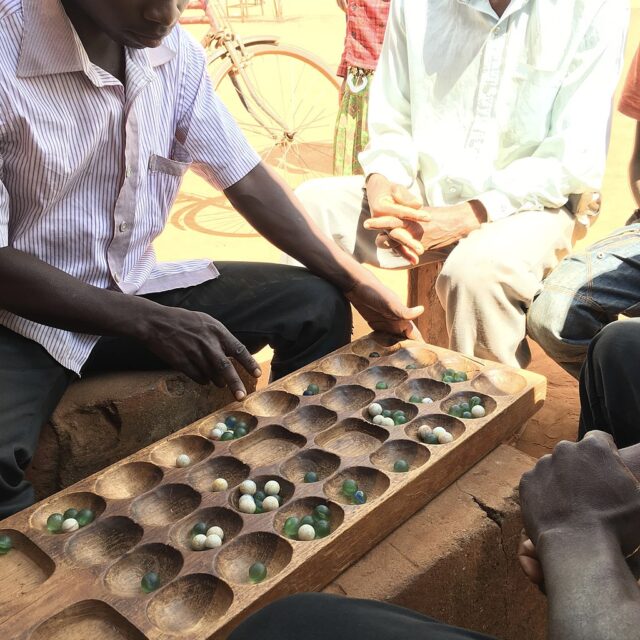
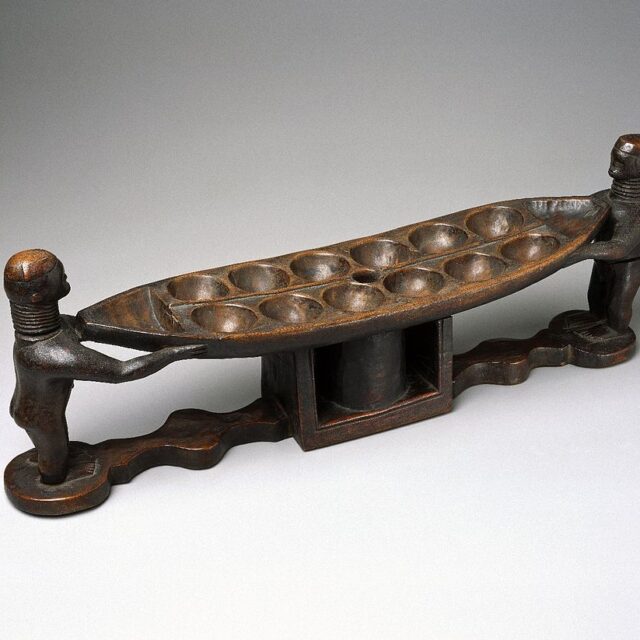
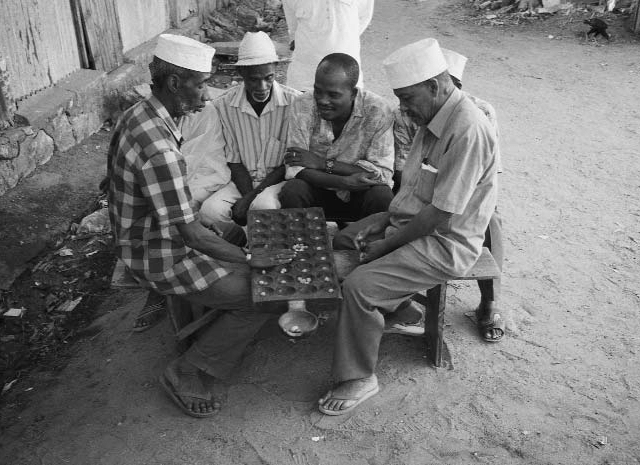
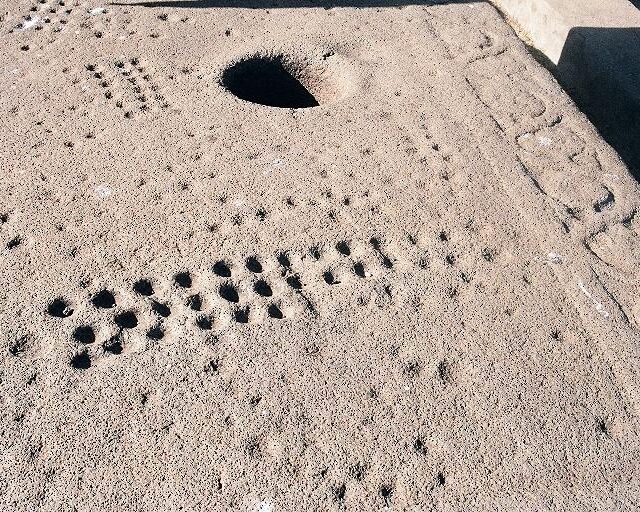
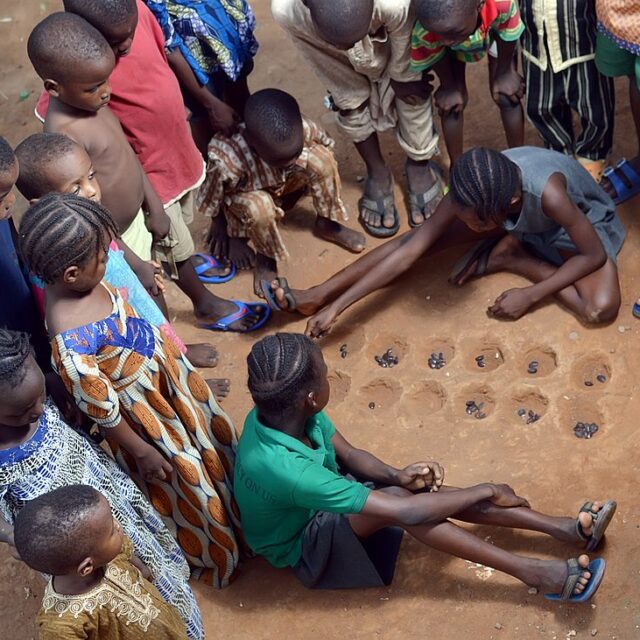
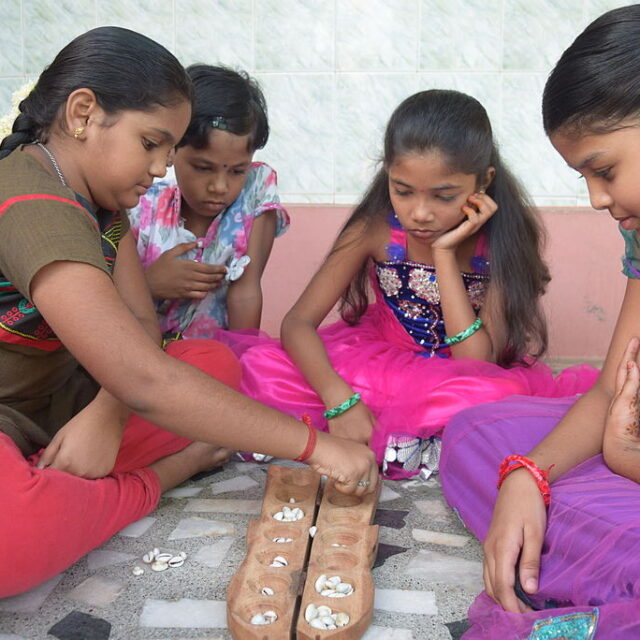
“The nature of the game”. 59th Venice Biennale, 2022 Pavilions of Belgium. Curator: Hilde Teerlinck
Mancala is a very ancient African game that is part of the family of planting games. In one of the most popular versions, the mancala is a board that has two parallel rows of six holes, one row for each player. Four tokens, the seeds, are placed in each hole. On either side two receptacles, the mancala, hold the earned seeds. They can be beans, seeds, berries or grains, stones or as we did, shells.
The board represents heaven and earth, and in some cultures the movement of the tokens simulates the acts of planting and harvesting.

How to play
In turn each player takes all the tokens contained in one of the six holes in his row and, proceeding counterclockwise, “plants” them in the holes that lie in succession after the one from which he took them, one per hole including of course his own mancala.
If, during play, either player arrives with his last token in an empty hole or one containing more than two marbles, he takes none. If, on the other hand, the hole contains 1 or 2 checkers, excluding the one he laid down, he is entitled to take all the checkers in the hole, including his own.
The game ends when either player no longer has enough checkers to move. In this case, the opponent captures the remaining checkers and the player who has captured the most checkers wins. However, to prevent such a situation from occurring too early in the game, it is forbidden to completely empty the opponent’s ranks, thus preventing him from making a counter move, unless all possible moves block, in any case, the opponent. The player who does not comply with this last rule is punished: his opponent captures all the pawns left in the game.
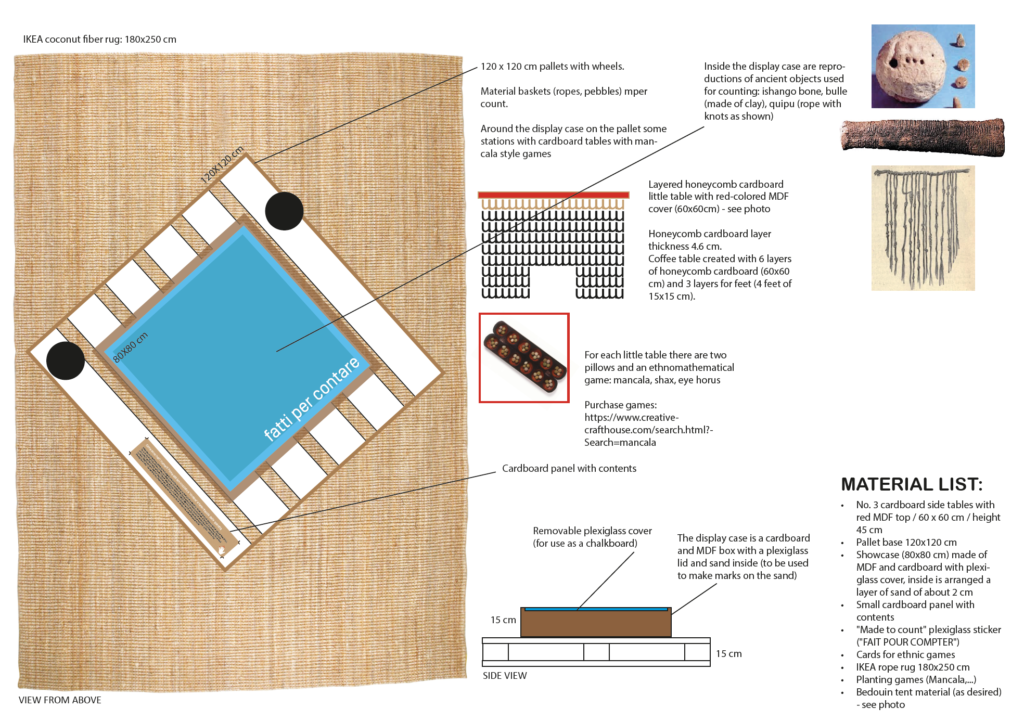
How to build
EXHIBIT MATERIAL:
- Base pallet or cardboard table, where to place the mancala.
- Seat cushions
- Cardboard side tables for mancala: No. 3 cardboard side tables with red MDF top / 60 x 60 cm / height 45 cm (Glue the layers of honeycomb board together as shown in the picture ⇒)
- + Mancala games
The mancala games can be found in several online shops, or can make the board on a sheet and use pebbles. It is very simple.
The carboard table:
